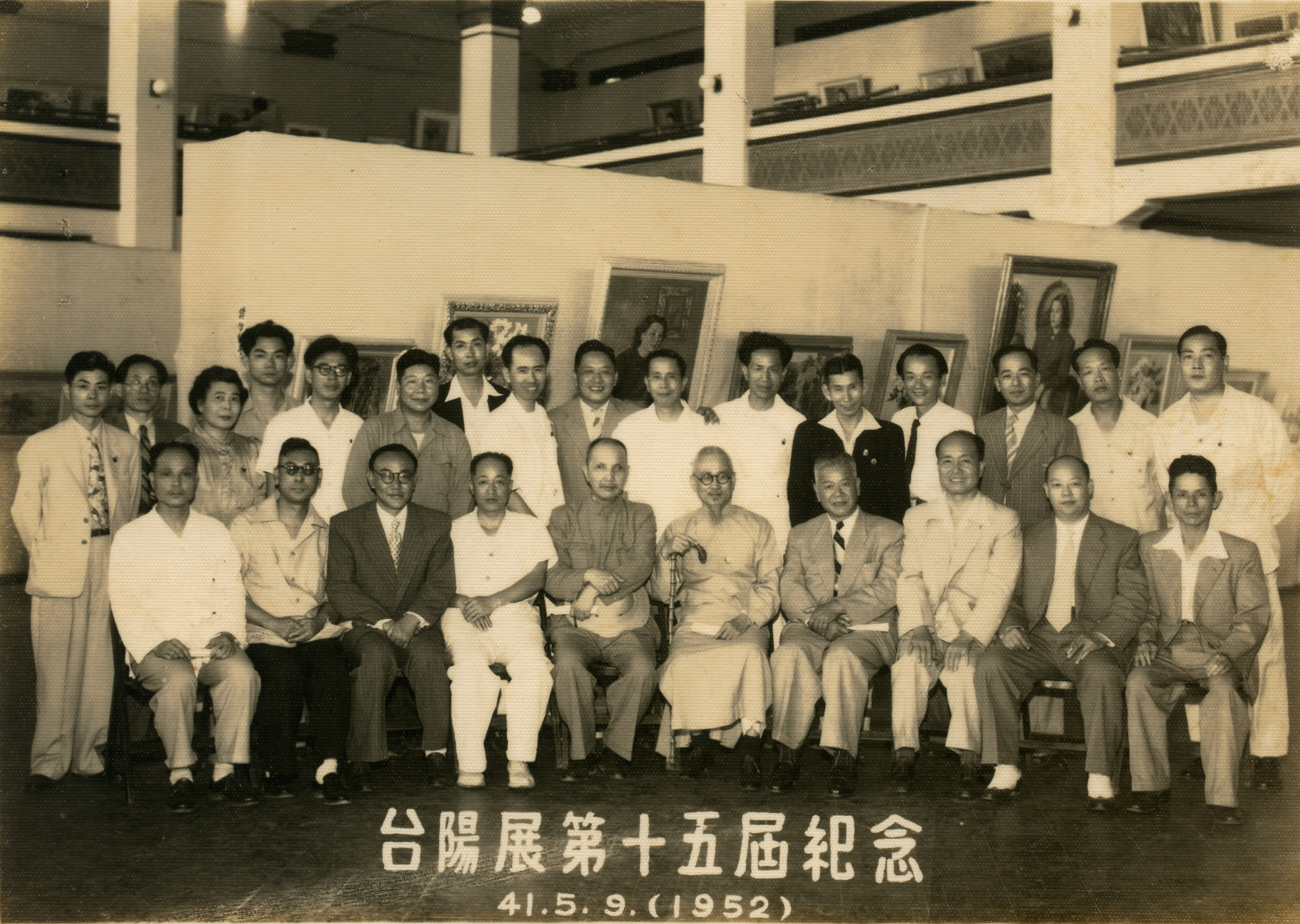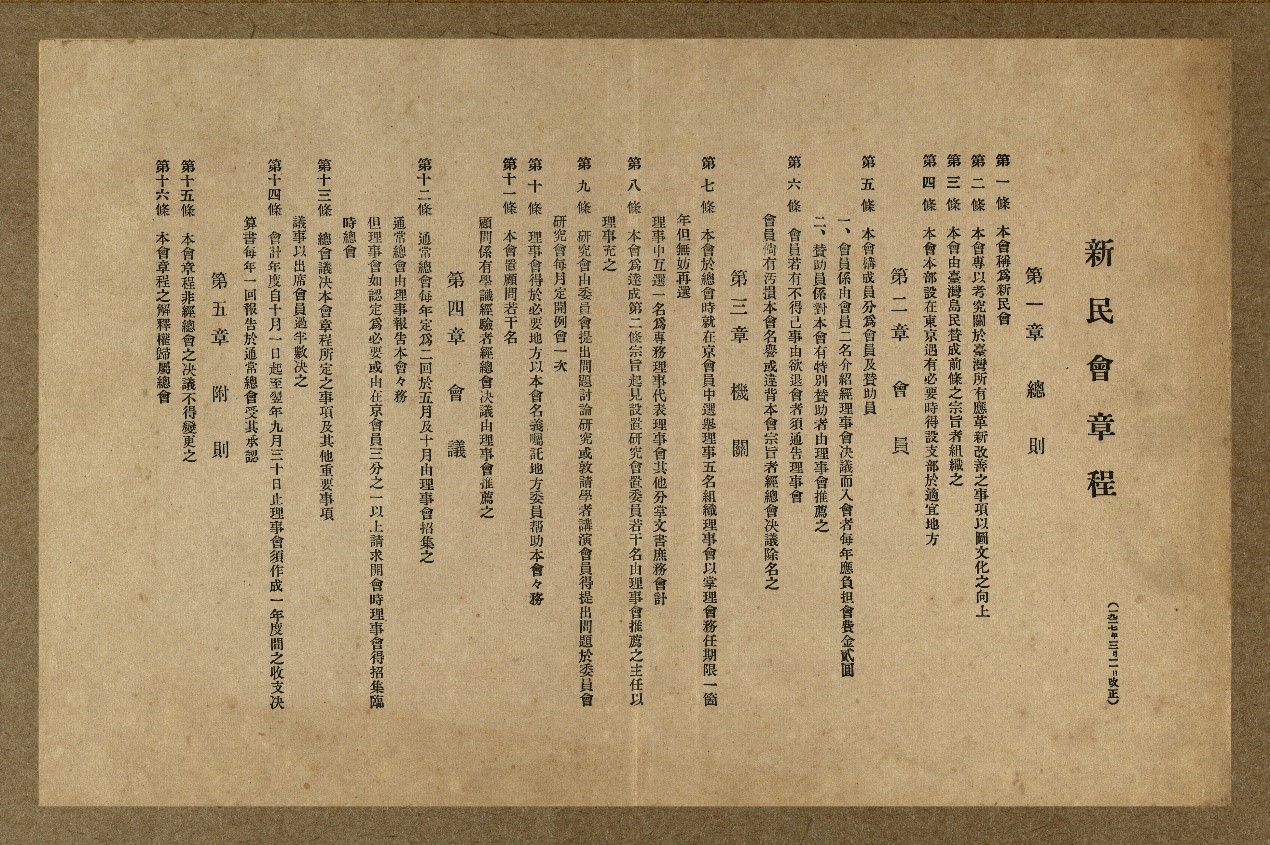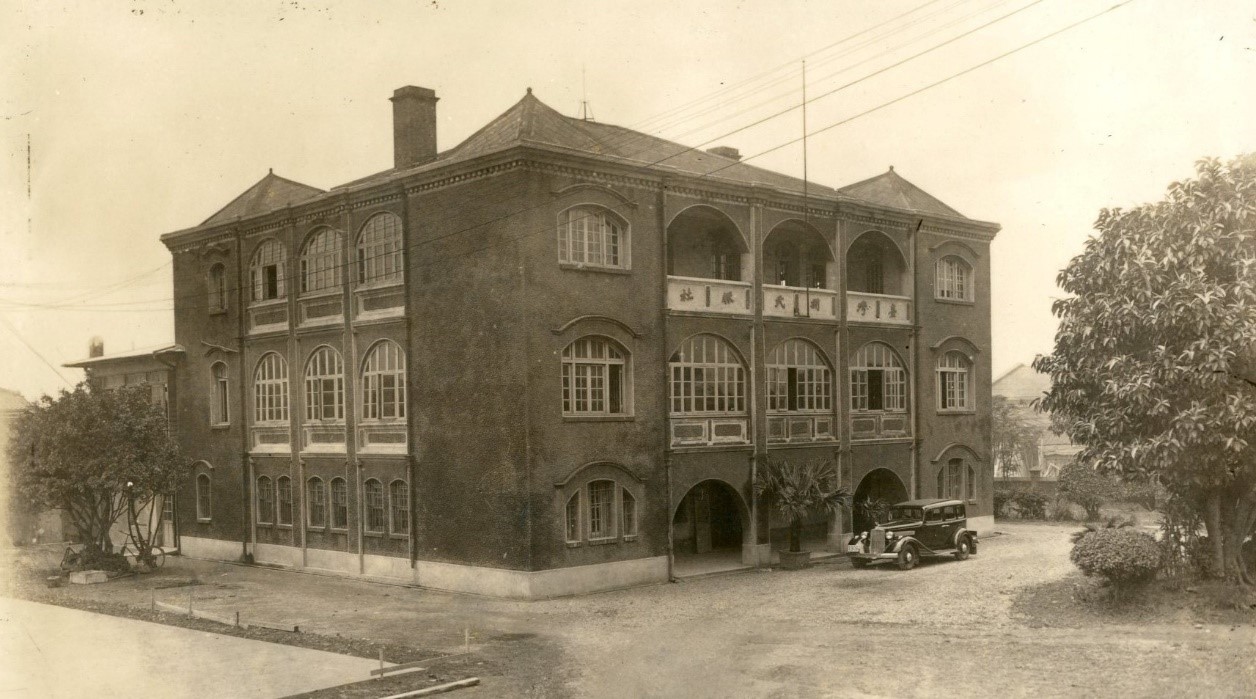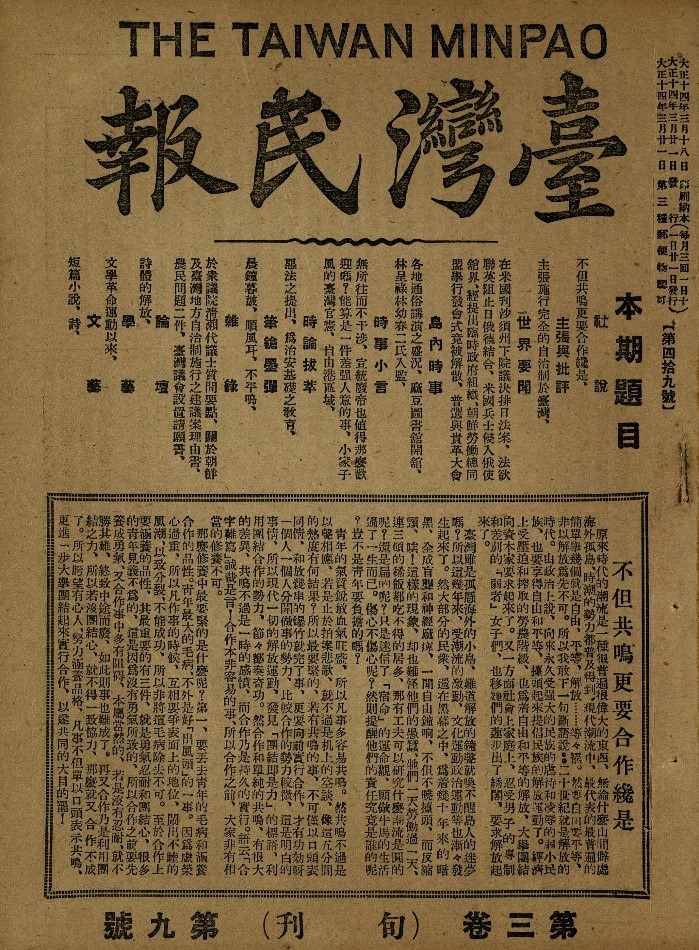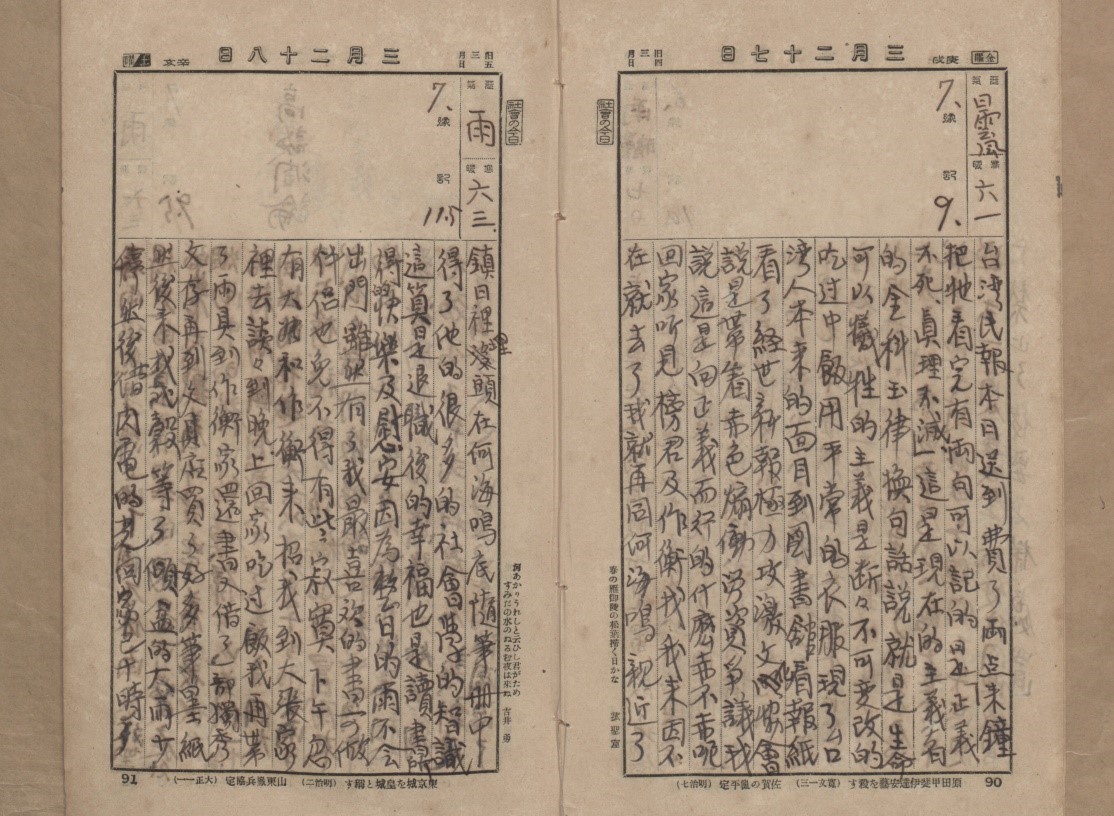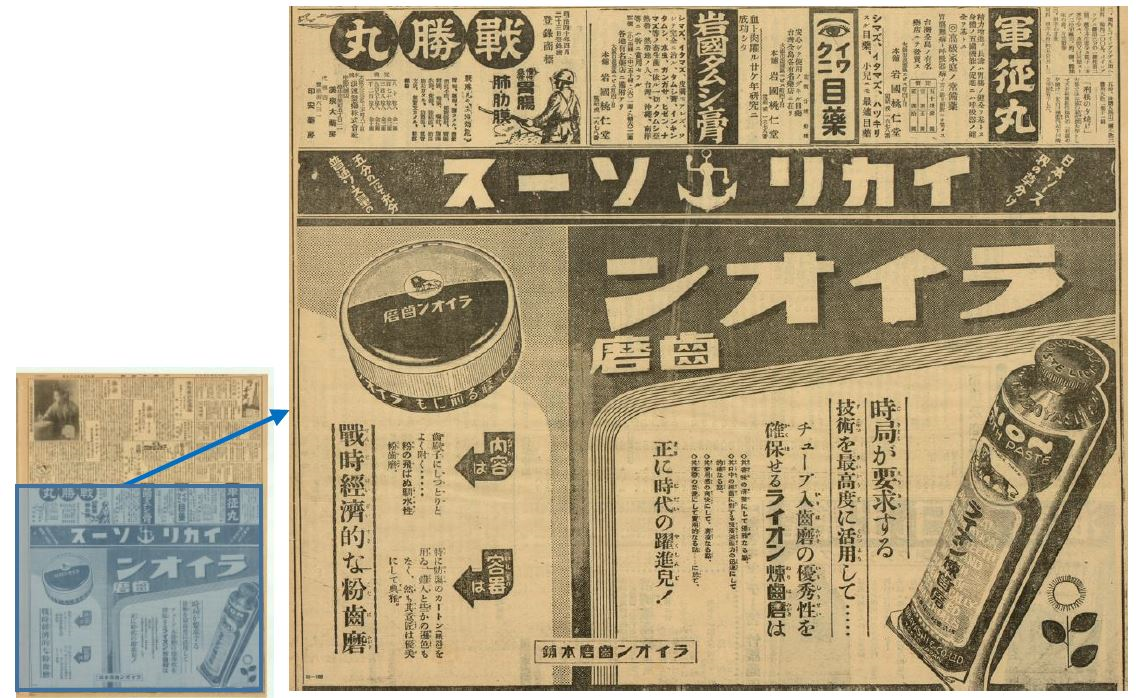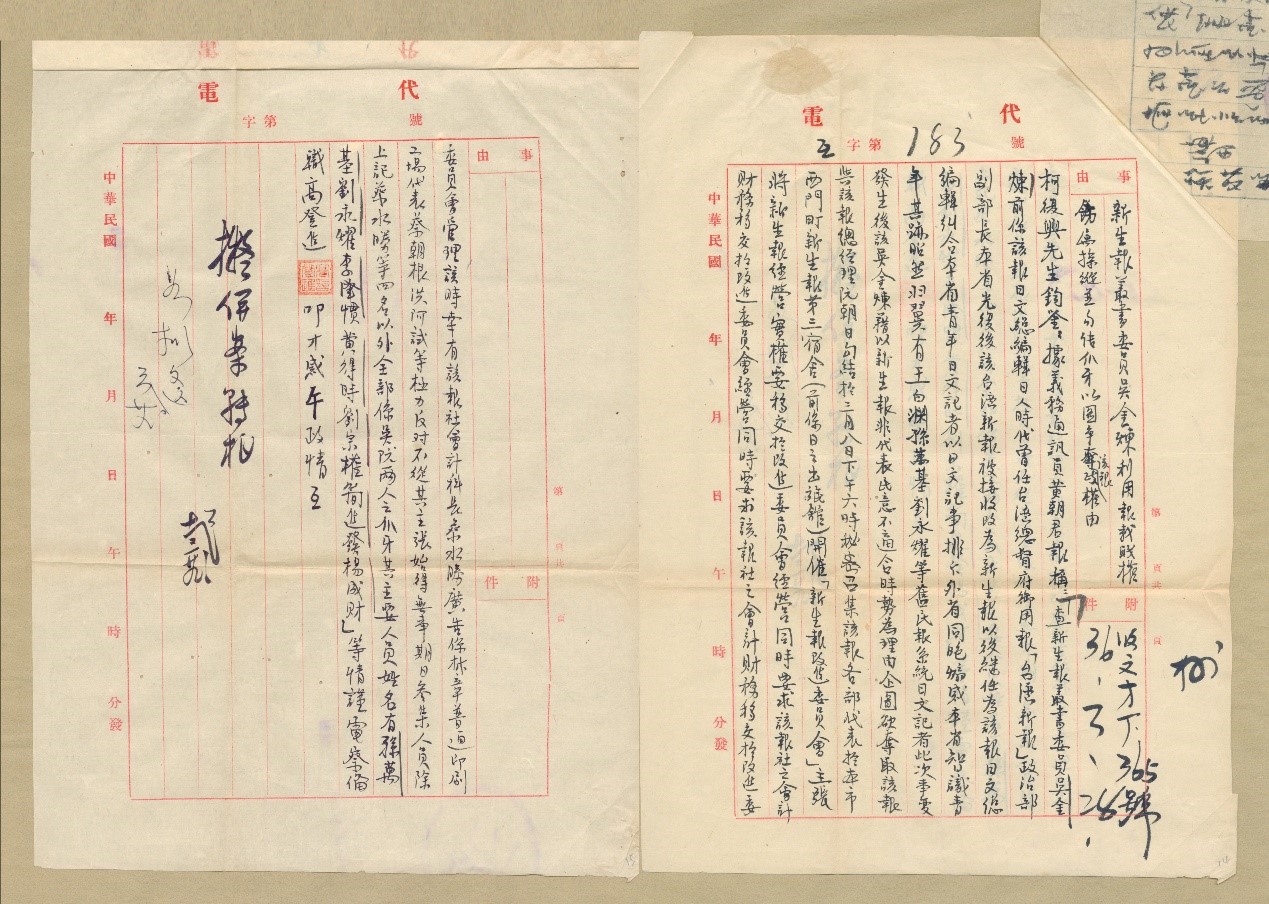|
The Beginning with New People Society In 1920, Taiwanese students in Tokyo, Japan, founded ‘New People Society,’ aiming at political reform and cultural enlightenment through such ensuing publications as ‘The Tâi-oân Chheng-liân’ and The Formosa that sought to push enlightened ideas in the general public. In April 1923, ‘Taiwan Minpao’ began to be published in vernacular Han language. It was a newspaper that encompassed a wide range of topics including politics, economy and culture. It transmitted new ideas originating from abroad as well as lambasting contemporary politics. Originally publishing once every two weeks, it later became a weekly publication in 1925. In 1930, the paper was restructured and renamed “Taiwan Shin Minpao,” before being granted the right to publish daily in 1932. It was the only daily newspaper at the time to be funded by the people of Taiwan.
Figure 1: Articles of Association, ‘ New People Society,’ 1927, describing the aim of the society as ‘studying all ways to reform and striving for cultural improvement in Taiwan.’
After gaining the ability to publish daily, 'Taiwan Shin Minpao' witnessed continued growth in the scale of operation, manpower and facilities as well as the reach of its correspondents within the island of Taiwan and overseas. Across the island, 13 sites of operation were established at the apogee of the newspaper’s business, ranging from the initial location in Hsinchu to a branch in Hualien, eastern Taiwan. From 1933, points of overseas operation came to include Amoy, Shanghai and Dalian. After 1941, following the moving frontiers of the war, the newspaper also added branches in Guangdong and Hong Kong and even had correspondents active across a wide area in Southeast Asia.
Figure 2: Headquarters of ‘Taiwan Shin Minpao,’ 1932
From its inception, ‘Taiwan Minpao’ published critical contents in the spirit of ‘voicing for the people.’ And yet, as ‘Taiwan Newsprint Regulations’ dictated, the press was subject to the censorship of the police bureau of the Government-General of Taiwan. The pieces critical of the status quo found in ‘Taiwan Minpao’ were thus frequently banned from publication. Despite this, the newspaper was able to continue through news reportage to publish much political and social commentary.
Figure 3: ‘Taiwan Minpao,’ 21 March, 1925
Figure 4: Ng Ong-seng’s diary on the editorial, March 27, 1925.
On becoming a daily publication, ‘Taiwan Shin Minpao’ underwent a shift in focus from political commentary to reportage more favorable to themes of popular culture, with expanded layout for entertainment and art and a supplement about household topics. As the main source of income for the newspaper, the advertisement section came to cover a wide variety of industries and be equipped with exquisite artworks that were complemented by slogans designed to be most effective at attracting attention.
Figure 5: Editorial in ‘Taiwan Shin Minpao,’ April 19, 1932.
Figure 6: Advertisement in ‘Taiwan Shin Minpao,’ July 1940
In 1941, ‘Taiwan Shin Minpao' was renamed ‘Kounan Shinbun (Kounan News)’ under political pressure. By March 1944, it was merged with other major newspapers to form ‘Taiwan Shinpo.’ The discontinued paper had nevertheless provided a platform for the people of Taiwan to express their ideas and criticisms, a practice to be sustained after the war. With the defeat of Japan in 1945, the people of Taiwan carried on with their outspokenness from the period of Japanese rule and once again organized newspapers as a means to voice their opinions. With the advent of the February 28 Incident and the proclamation of martial law in 1949, White Terror descended upon the island of Taiwan and outlying isles, with the total loss of freedom of speech as a consequence.
Figure 7: Agreement of Merger for the six newspapers 1944
Figure 8: Bureau of Secrets Intelligence Officer Tengchin Kao Reporting Chin-lien Wu of Taiwan Shin Sheng Daily News of Alleged Scheme, 1947 |
 |


